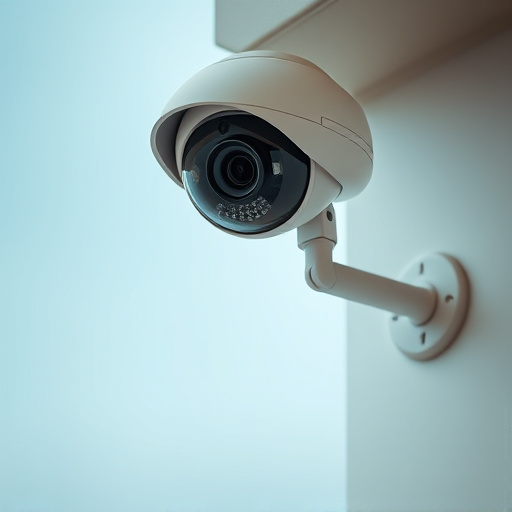Fake CCTV Cameras With Motion have evolved into advanced, cost-effective security tools, mimicking genuine equipment with realistic features and motion sensors. Their versatility appeals to homeowners and businesses for crime deterrence without professional installation costs. However, their proliferation raises ethical and legal concerns about privacy violations in public spaces, where regulations struggle to balance security and abuse prevention.
In today’s surveillance-driven world, realistic fake CCTV cameras offer a unique twist on security. This article delves into the intricate details of fake CCTV cameras with motion activation, exploring their growing popularity and diverse applications. From understanding the technology behind these realistic replicas to installation tips for effective deception, we uncover the power of motion-activated surveillance fakes. Additionally, ethical considerations and legal implications are discussed, providing a comprehensive guide to this intriguing topic.
- Understanding Realistic Fake CCTV Cameras
- Types of Motion-Activated Surveillance Fakes
- Installation Tips for Effective Deception
- Ethical Considerations and Legal Implications
Understanding Realistic Fake CCTV Cameras
Realistic fake surveillance equipment, particularly Fake CCTV Cameras With Motion, have evolved significantly in recent years. These devices are designed to mimic genuine security cameras’ appearance and behavior, offering a cost-effective alternative for various purposes. From home owners seeking additional security to businesses wanting to deter crime without the expense of professional installation, these fake cameras provide a compelling solution.
The key to their success lies in the attention to detail. Advanced manufacturing techniques allow these cameras to feature realistic lenses, casing designs, and even LED indicators that mimic the behavior of actual CCTV systems. Moreover, motion-activated features ensure they only capture footage when necessary, enhancing their realism and energy efficiency. This blend of technological sophistication and practical application makes Fake CCTV Cameras With Motion a versatile tool in the realm of security and deterrence.
Types of Motion-Activated Surveillance Fakes
Surveillance equipment has evolved significantly, and now includes a range of realistic-looking fake options, particularly in the realm of motion-activated surveillance fakes. One prominent type is the fake CCTV cameras with motion. These devices mimic genuine security cameras in appearance and functionality, but are designed to deter crime without the need for costly and extensive physical security systems. They offer a cost-effective solution for businesses and homeowners looking to enhance their security measures without breaking the bank.
These fake cameras often feature advanced technology such as infrared sensors and high-definition video capabilities, making them difficult to distinguish from real CCTV cameras at first glance. Strategically placed in visible areas, they act as a powerful psychological deterrent, encouraging potential intruders to think twice before attempting any unauthorized entry. In addition to their practical benefits, these realistic fakes can also contribute to a sense of safety and peace of mind for residents and business owners alike.
Installation Tips for Effective Deception
When installing realistic-looking fake surveillance equipment, such as Fake CCTV Cameras With Motion, positioning is key to achieving effective deception. Place them in areas that mimic genuine security setups—high up on walls or corners, away from obvious view yet still visible enough to deter potential intruders. Consider environments where motion sensors are common; aligning these cameras with sensor coverage zones will enhance their illusion of functionality.
Remember, the goal is not just to fool the eye but also to manipulate behavior. Ensure the cameras are positioned to capture crucial entry points or valuable assets. Regularly change their arrangement and angles to maintain an air of unpredictability, making it harder for would-be thieves to anticipate your security measures.
Ethical Considerations and Legal Implications
The proliferation of realistic-looking fake surveillance equipment, including intricate mimicry of CCTV cameras with motion detection capabilities, raises significant ethical and legal questions. While the technology offers potential benefits in deterring crime and enhancing security, its misuse can lead to severe privacy violations and a chilling effect on public spaces.
One of the primary concerns is the ease with which these fake cameras can be deployed surreptitiously, capturing individuals’ activities without their knowledge or consent. This raises ethical dilemmas regarding surveillance ethics, particularly in public areas where citizens expect a certain level of privacy. The legal implications are equally complex, as jurisdictions grapple with defining and regulating the use of such devices to balance security needs against potential abuses.
Realistic fake surveillance equipment, particularly motion-activated fake CCTV cameras, offer both creative solutions and ethical dilemmas. By understanding the various types and installation techniques, users can implement effective deception while navigating legal implications. While these devices can serve as powerful tools for personal or professional security, it’s crucial to consider the ethical boundaries and potential consequences of their use. Remember that responsible deployment is key to harnessing the benefits of fake CCTV cameras with motion activation without crossing the line.
